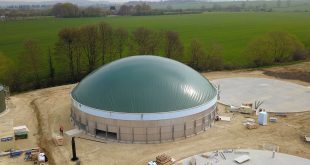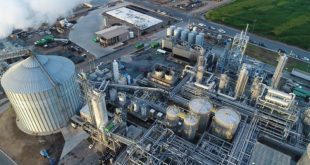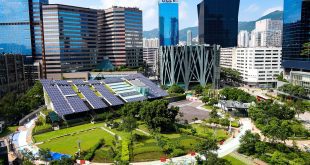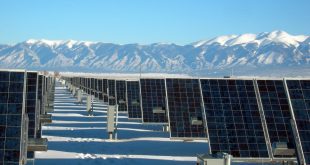I live in the tropics and am plagued by frequent power outages. The tap water holds around 28 Centigrade and sometimes I fill my bath tub with it to lay and cool down in, when the fans and airconds strike and I’m sweating too much. When I get out of the tub, I don’t always drain it, because I expect to take a cool dip again a few hours later, or even the next day. When the next day, it shows that the water in the tub has become quite cold, much colder than the tap water. Why doesn’t it have the higher air temperature around, how can it give off heat to a warmer environment? I can ask my sweating body the same question, how can it cool my body to an ambient temperature, that is the same or even higher than my body temperature?
The answer of course is, must be evaporation, which causes heat to flow spontaneously from a colder to a warmer region. This has been known for thousands of years and practiced by keeping water and wine cool in jars of porous material, through which some liquid exudes and evaporates. Hence, if you ever believed that heat cannot spontaneously flow from a colder to a warmer region, go to the tropics and experience that this is not true.
Nevertheless, you were likely taught this in school, but then your teacher failed to explain the Second Law of Thermodynamics, which says that heat cannot flow from a colder to a warmer region, WITHOUT causing other effects.
Other effects in my bath tub and body are surely there. If I do not replenish the water that evaporated, my bath tub will finally get empty and my body will die. This all has to do with entropy and if you don’t know what that is, read my article: “What is Entropy” for an explanation.
Now, suppose we could expand a saturated vapor at ambient temperature in an expander, where it comes on a lower pressure and temperature and contains a certain amount of cold liquid and equally cold gas. This is basically what happens in a steam engine, where the rest gas is condensed to water also and it shows that the drive power, to heat and compress the condensate back to usable steam, is far more than the mechanical power that the expander delivered on the shaft.
Ever since the days of James Watt, keeping the machine size down required to operate steam engines on full pressure, not letting the steam expand. Also in our modern steam turbines, the expansive power of steam is not used (the thermal energy is converted to kinetic energy instead). However, James Watt did make experiments with the expansion of saturated steam and from the results that he documented, I found that the power it develops is nearly the same as needed to compress the expanded mixture back to the original steam condition. My calculations show that the same is valid for ammonia vapor and this likely is the case for all saturated and wet vapors.
This would give the opportunity to convert heat (from fuel combustion) to mechanical power at very high efficiencies, 100% in an ideal machine, but 80% in practice, I deem as fully possible to achieve. If ammonia is used, even ambient heat could be converted into mechanical power and this is not in conflict with the Second Law, even though all scientists would say so today – they never considered the sweating bodies and jars in the tropics, while Watt’s experiments have been forgotten, or at least overlooked.
Suppose we could separate the expanded liquid and gas, then we could compress that cold liquid back to the original pressure, which would require very little work to do, zero if no change of volume occurs in the ideal case. This cold liquid could then absorb heat from the source (fuel or ambient) and evaporate back to gas, at constant temperature and pressure. The expanded gas part could be compressed in a normal compressor, by which it gets hot and this heat can be cooled off to ambient. Together with the evaporated liquid, the medium returns into the original condition, ready to expand again in the next cycle of the process.
As the mass of this gas was less than that of the total expanded mass of vapor previously, the compression heat energy becomes the same as the absorbed heat energy of the cold liquid. In the ideal case, the net work done becomes zero (compression work = expansion work) and heat flows spontaneously from a colder (liquid) to a warmer (gas) region. But this is in the ideal case, which the Second Law forbids. There will be losses in a practical machine, that yet would constitute a refrigerator, working at a far higher efficiency than today’s technology can achieve. The Carnot Rule can be broken, there is no physical law that forbids it!
It may however show very difficult to separate liquid and gas in the expanded phase, the more as it must occur spontaneously. It will have to be tried out and I have my ideas on how to do that. High efficient power conversion on the other hand, where no such separation is needed, even has to be avoided, would be far easier to do and I do have a machine concept for it. All it takes, is a developer, who lets me work with it…
Rudolph Draaisma is a double graduated engineer in electrics and mechanics, specialized in energy conversion, refrigeration, waste-heat recovery and alternative energy systems.
Online expert advice for your best solutions, against a moderate fee for short-term issues.
Also providing: CAD drawings, Techn. Documentations, Calculations, Translations, R&D projects
Read more on the The Alternative Energy and Engineering Site
Article Source: High Efficient Energy Conversion Technology
 Alternative Energy HQ solar power for homes, wind energy, and bio fuel issues
Alternative Energy HQ solar power for homes, wind energy, and bio fuel issues







